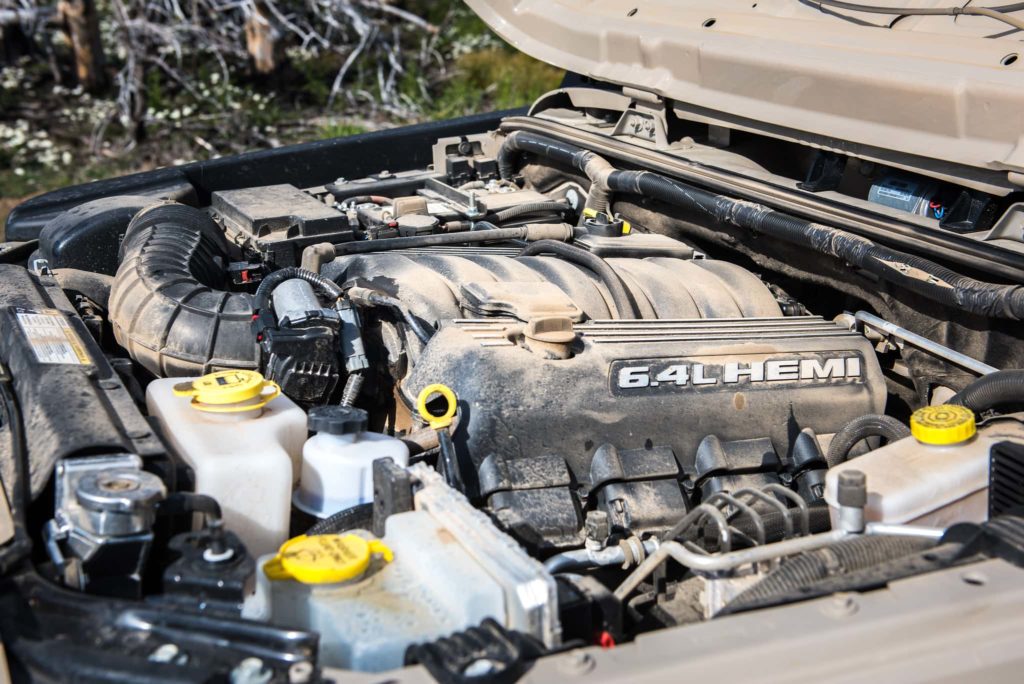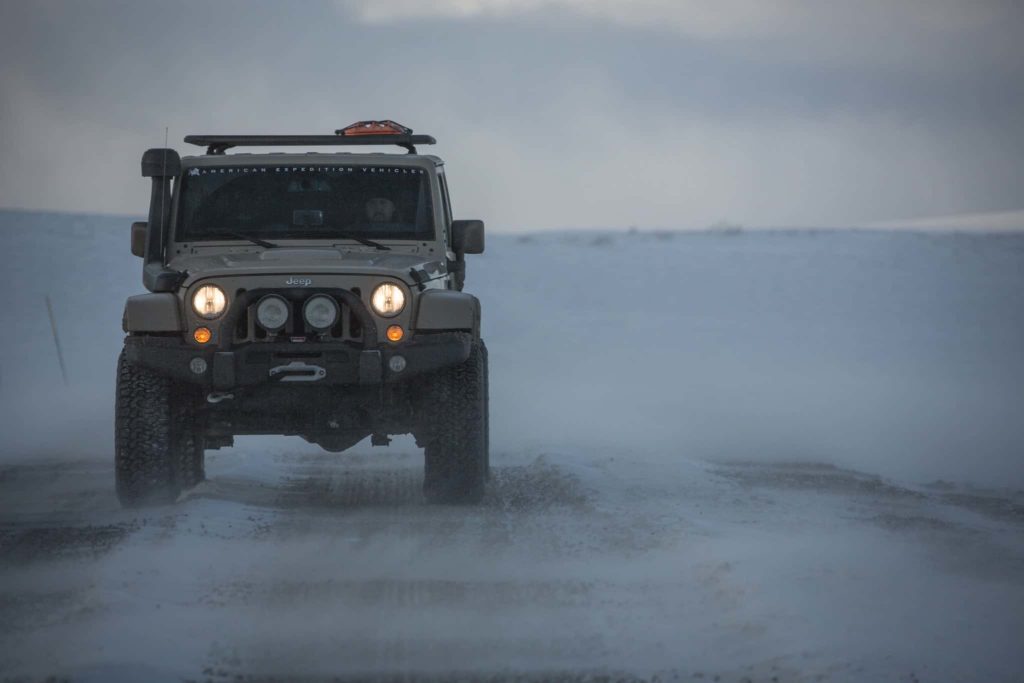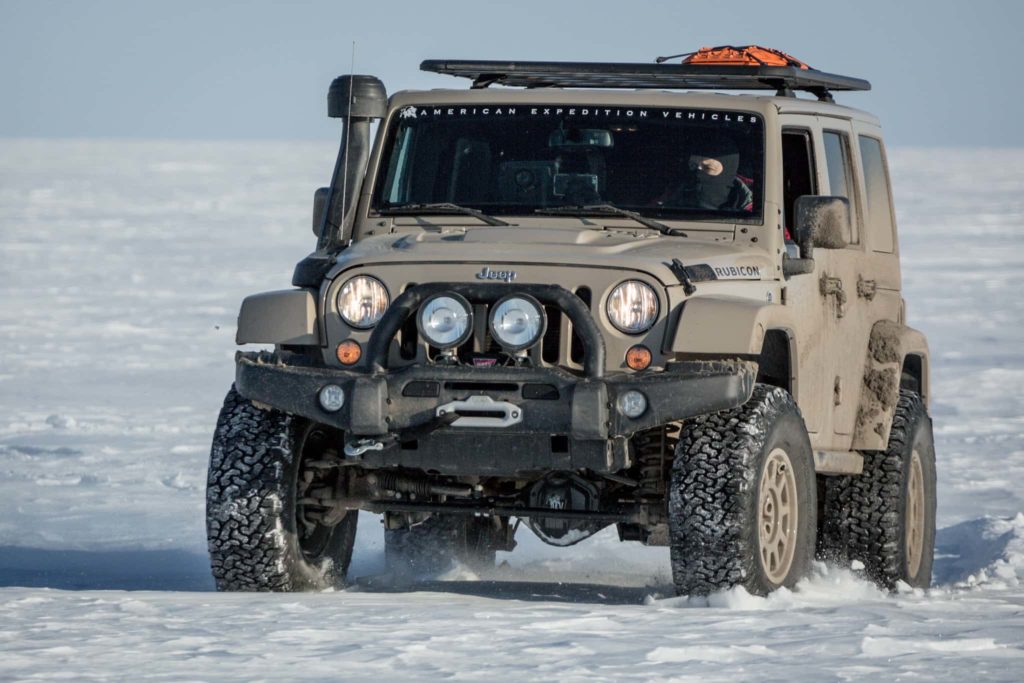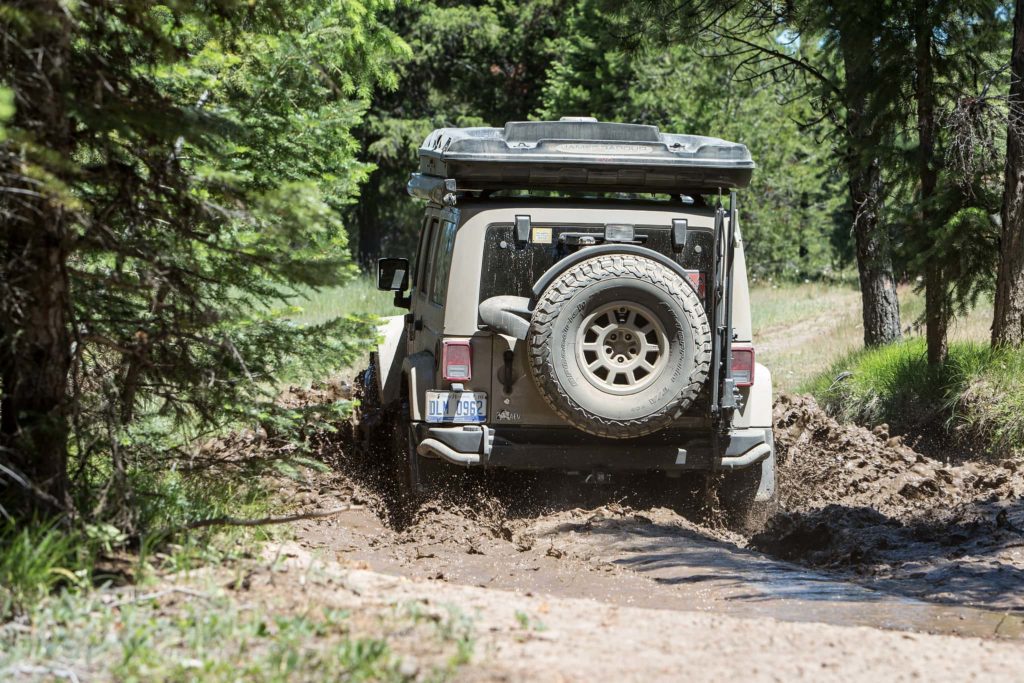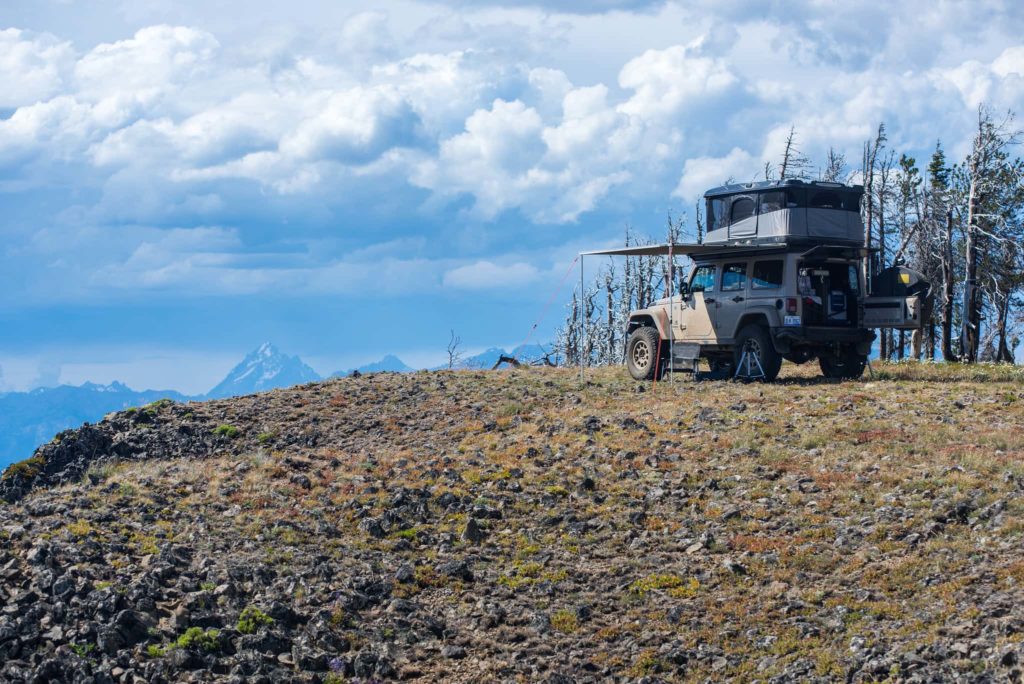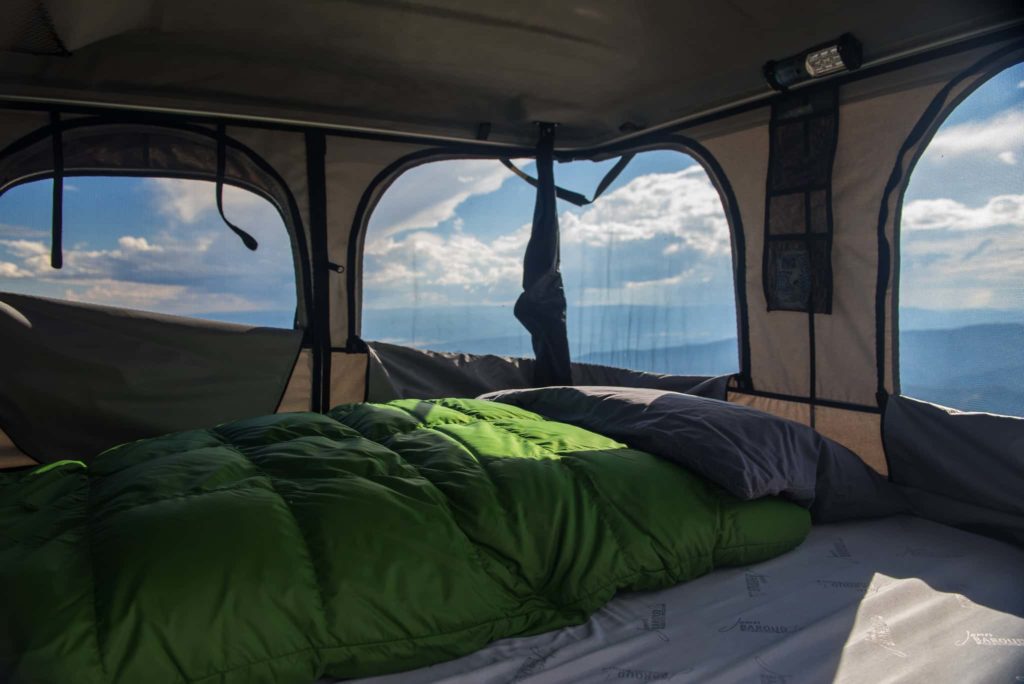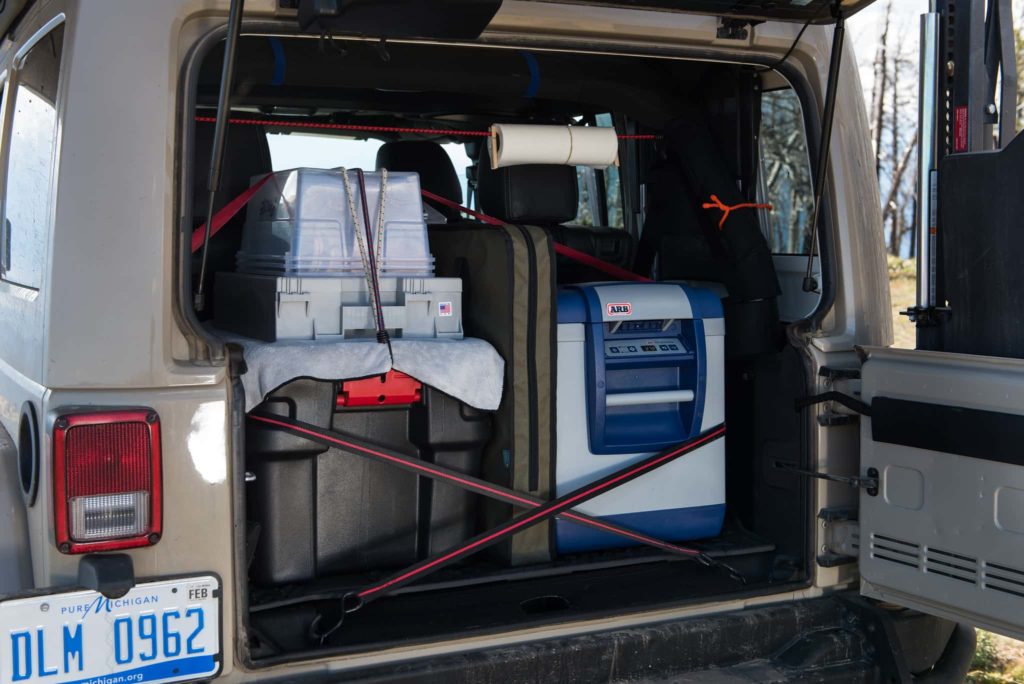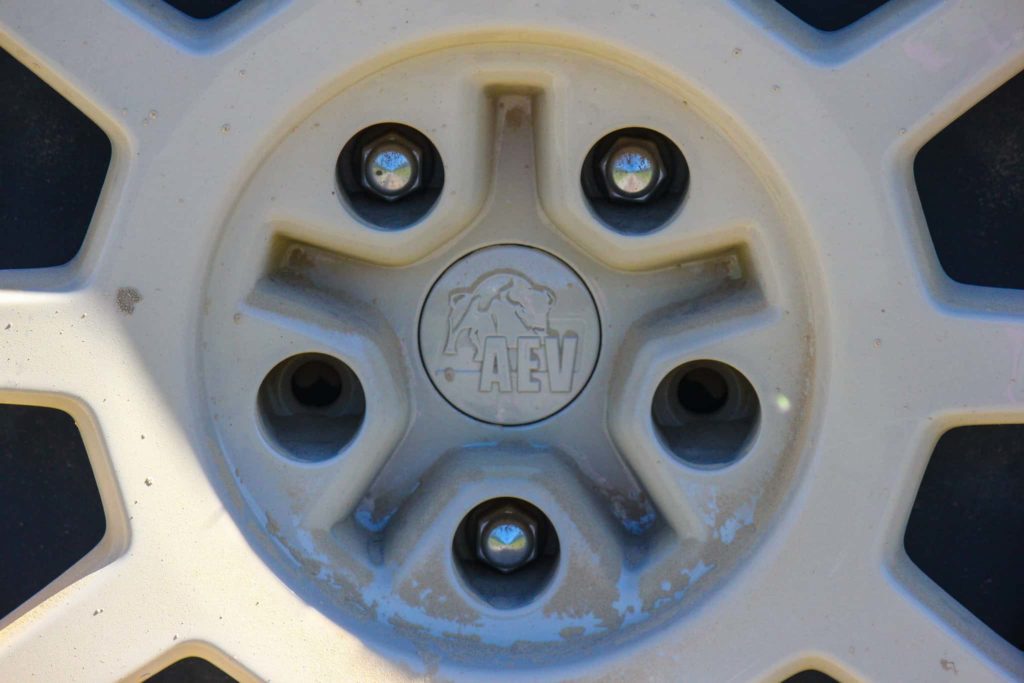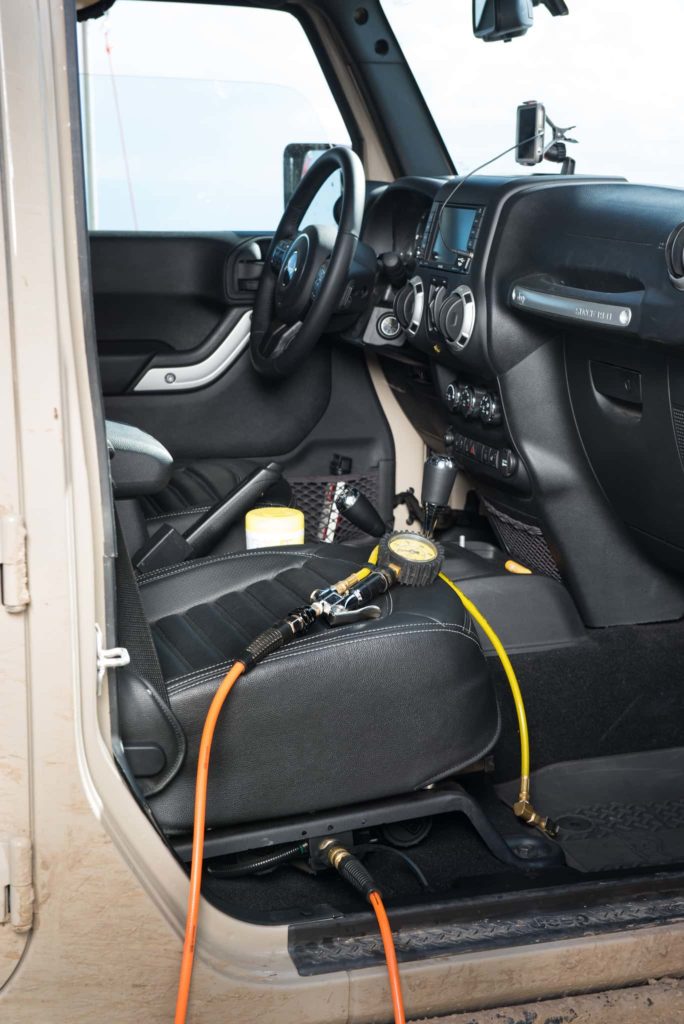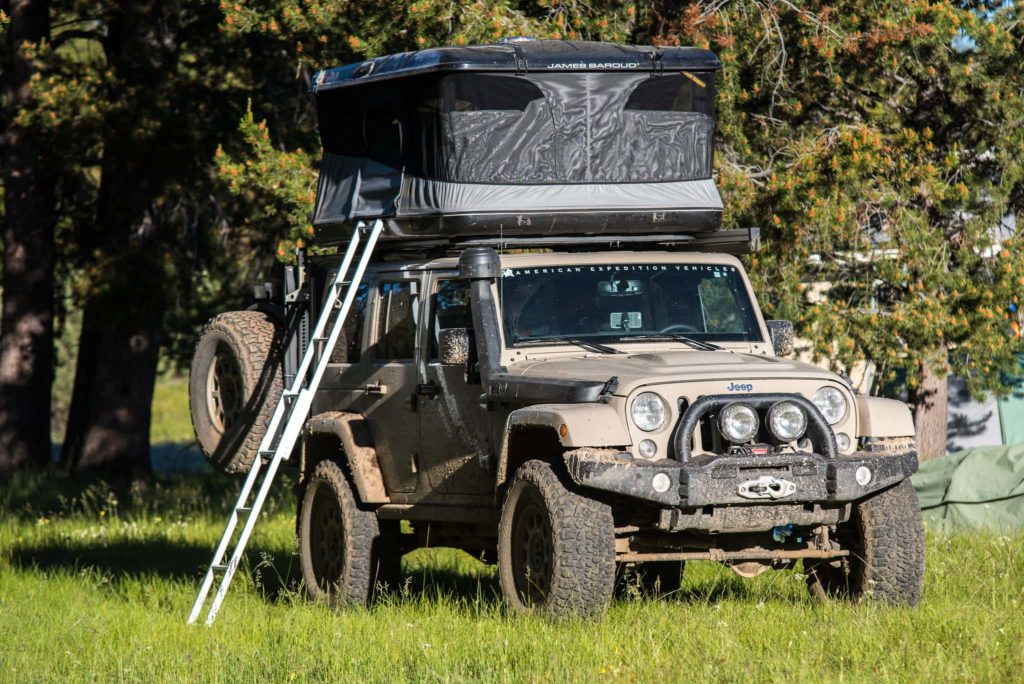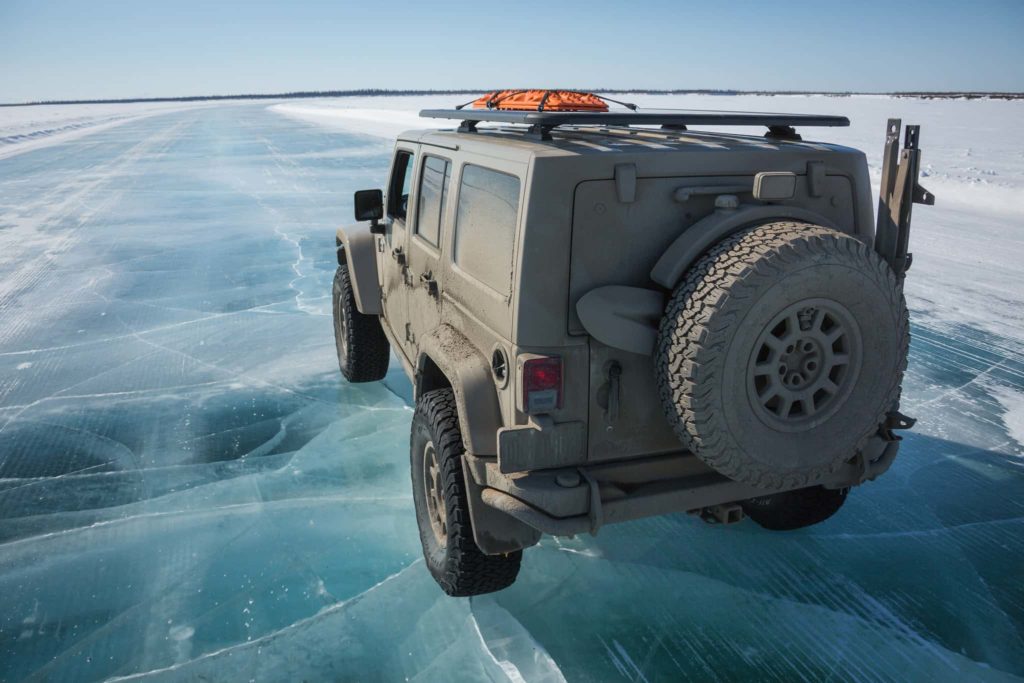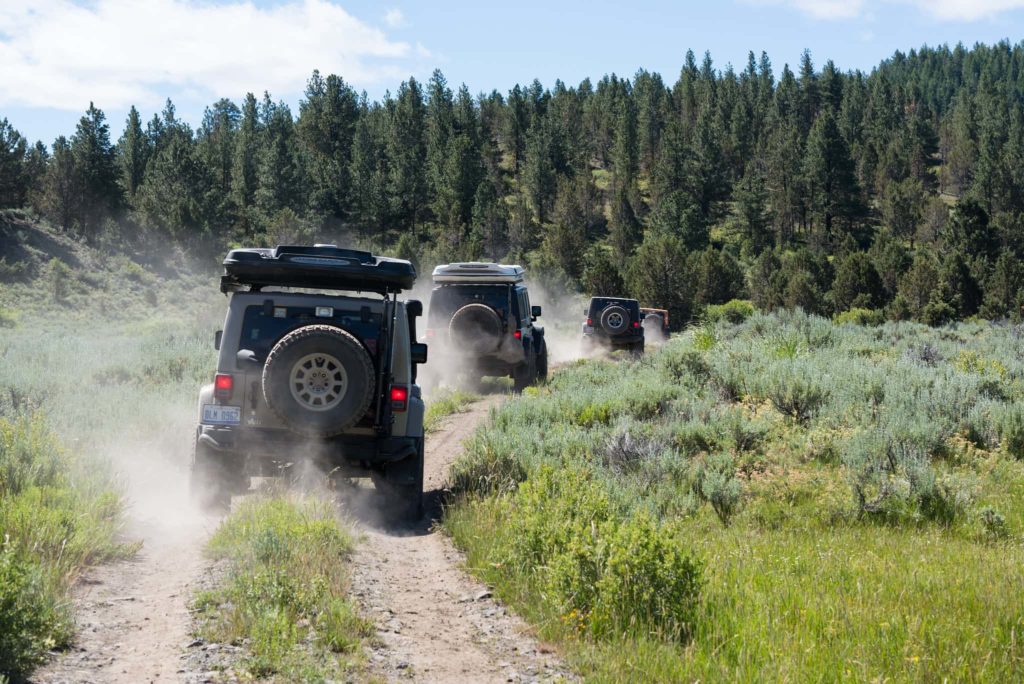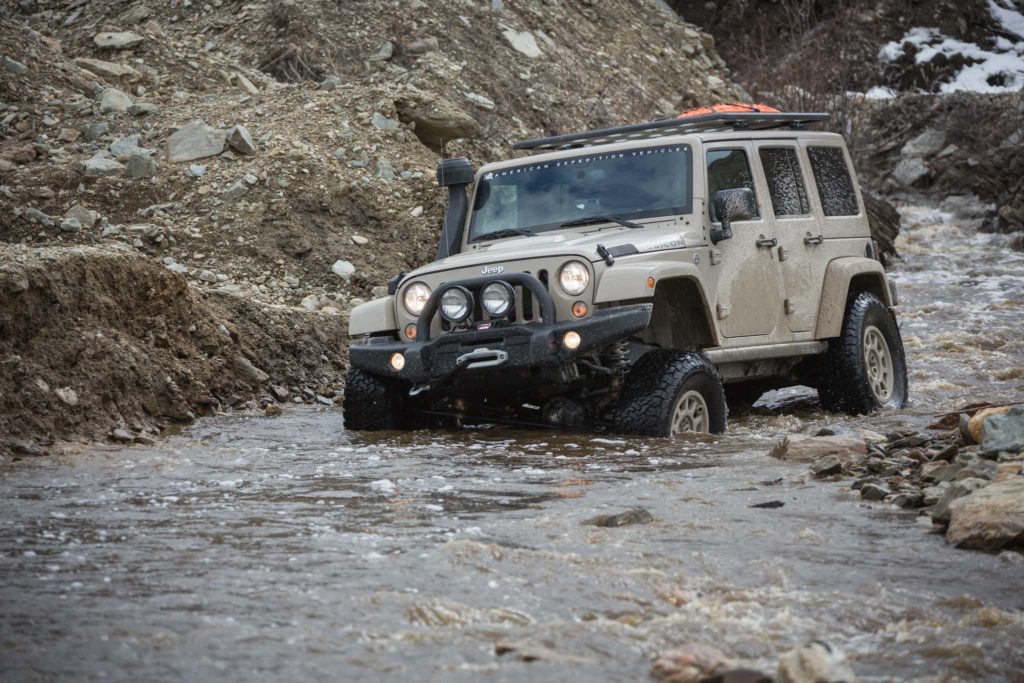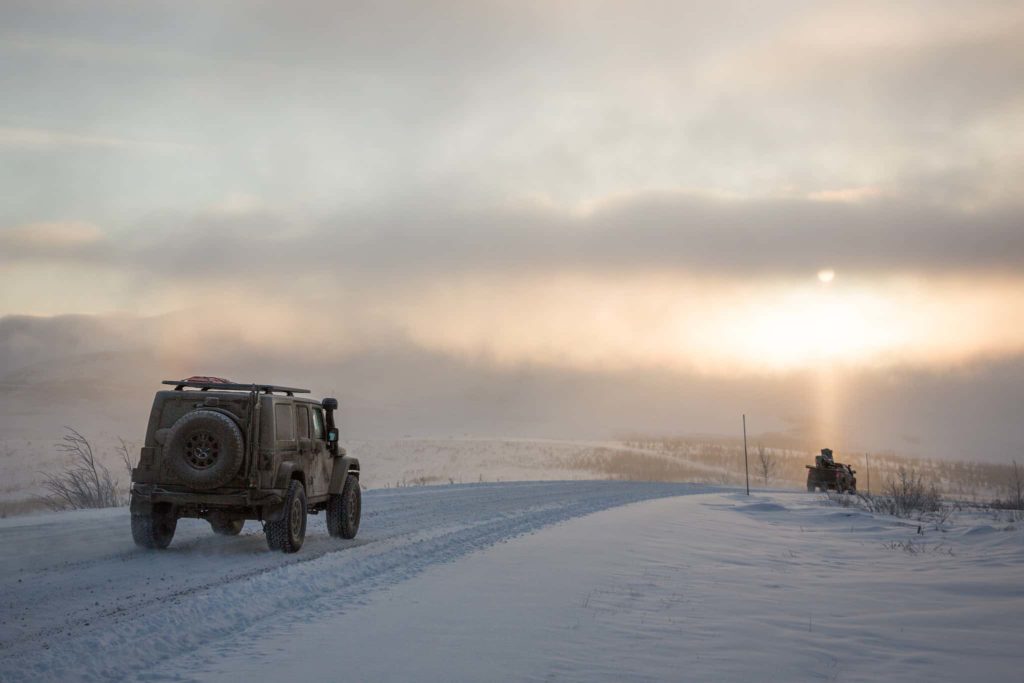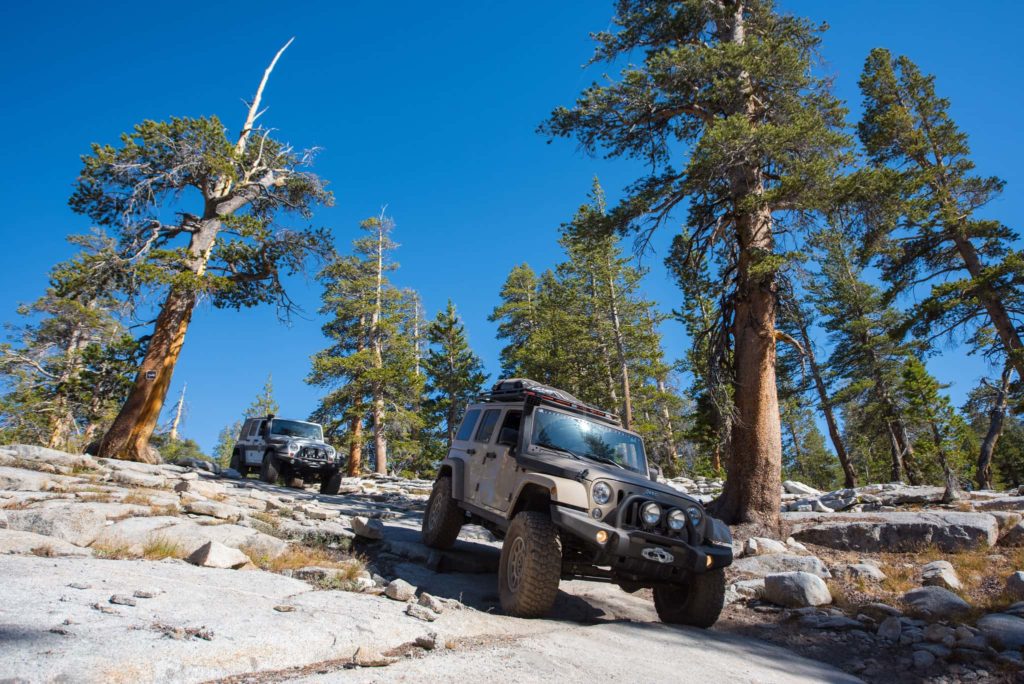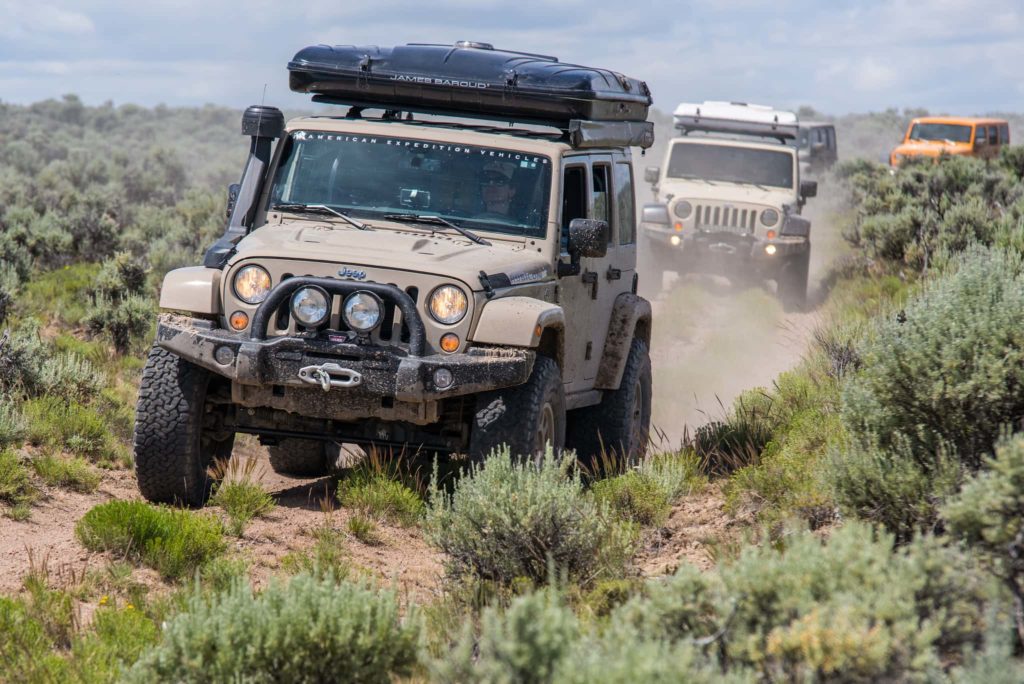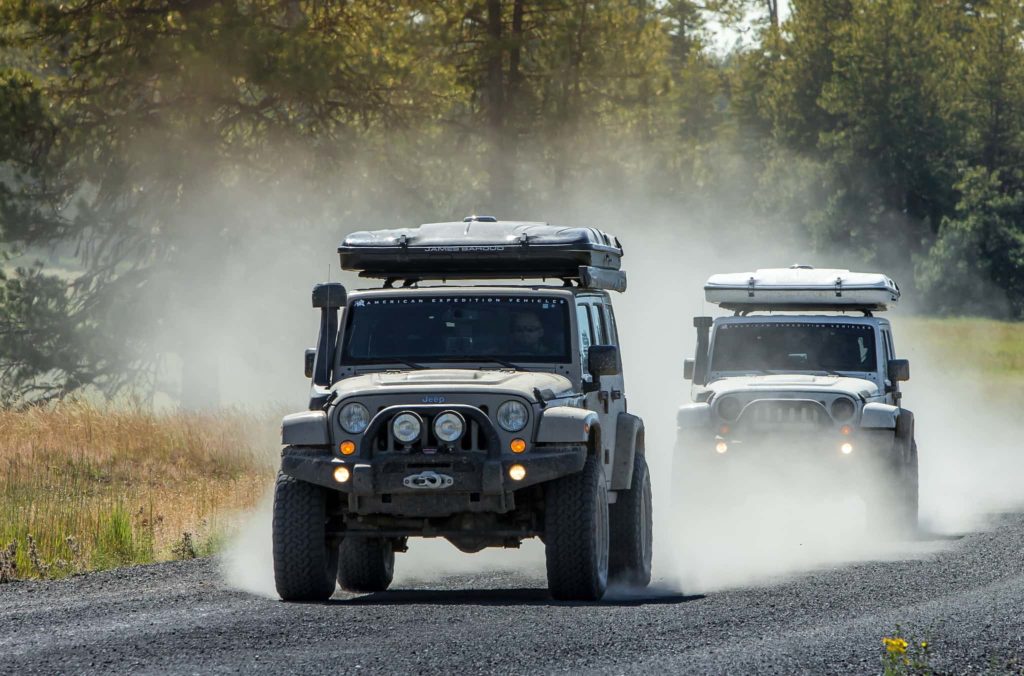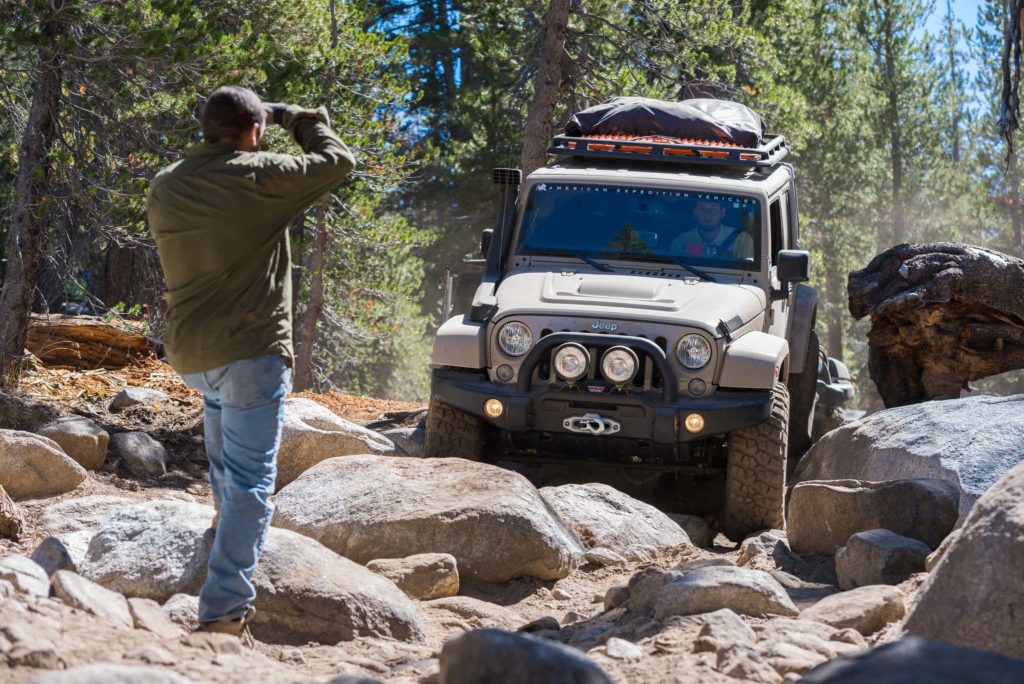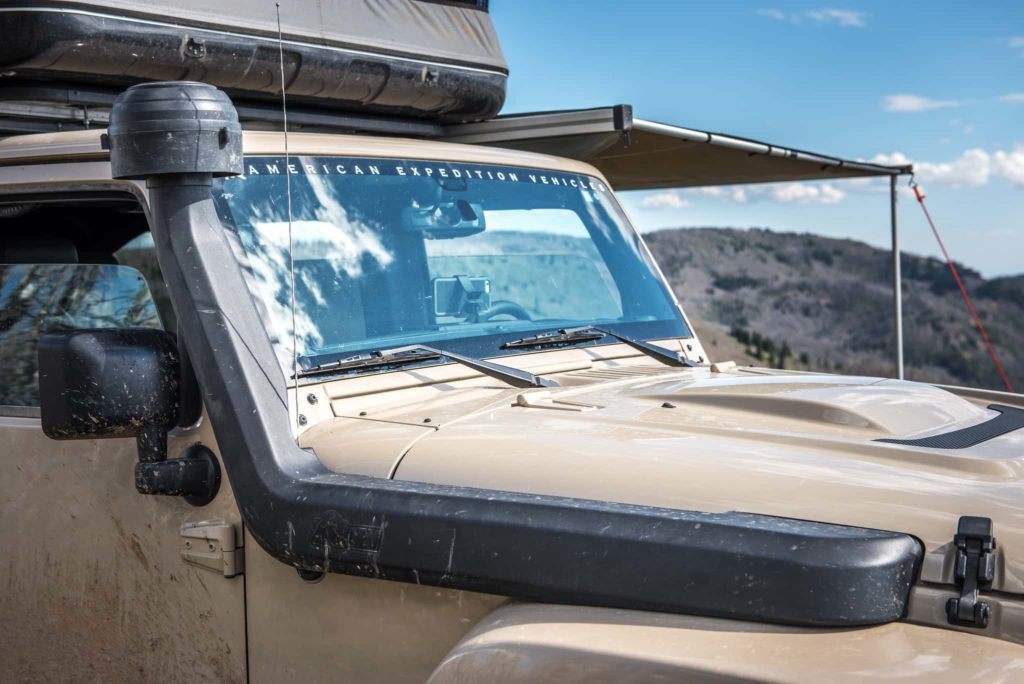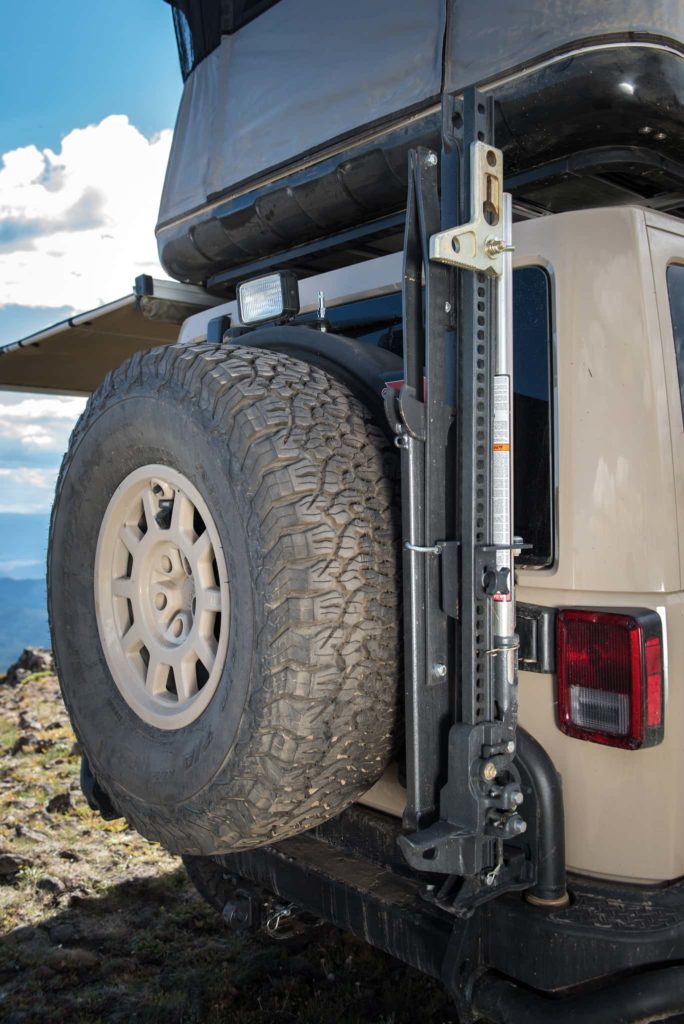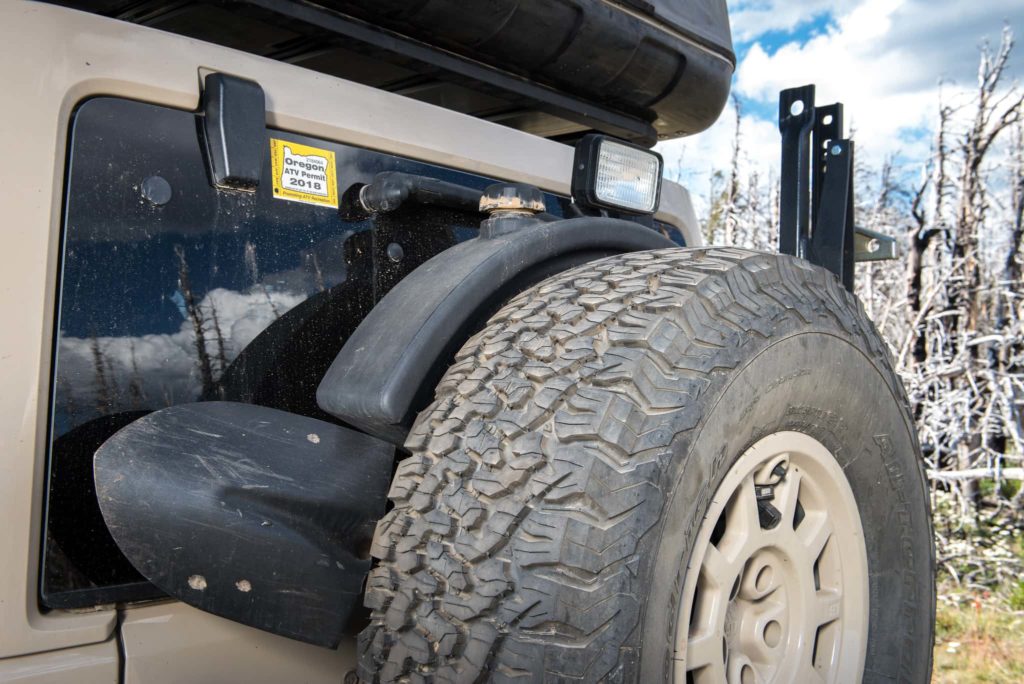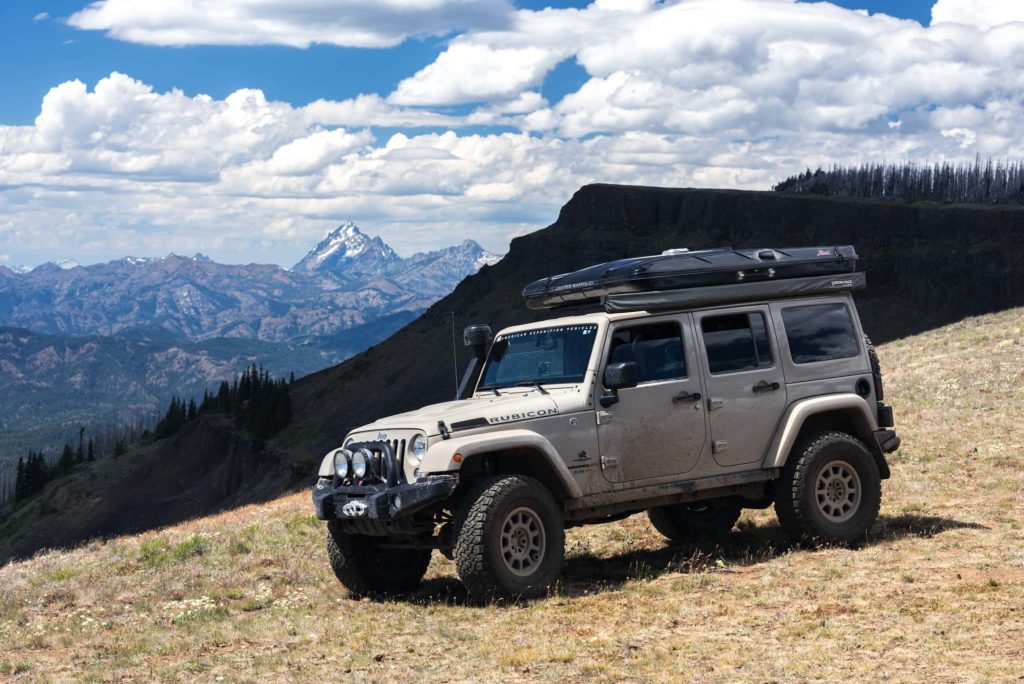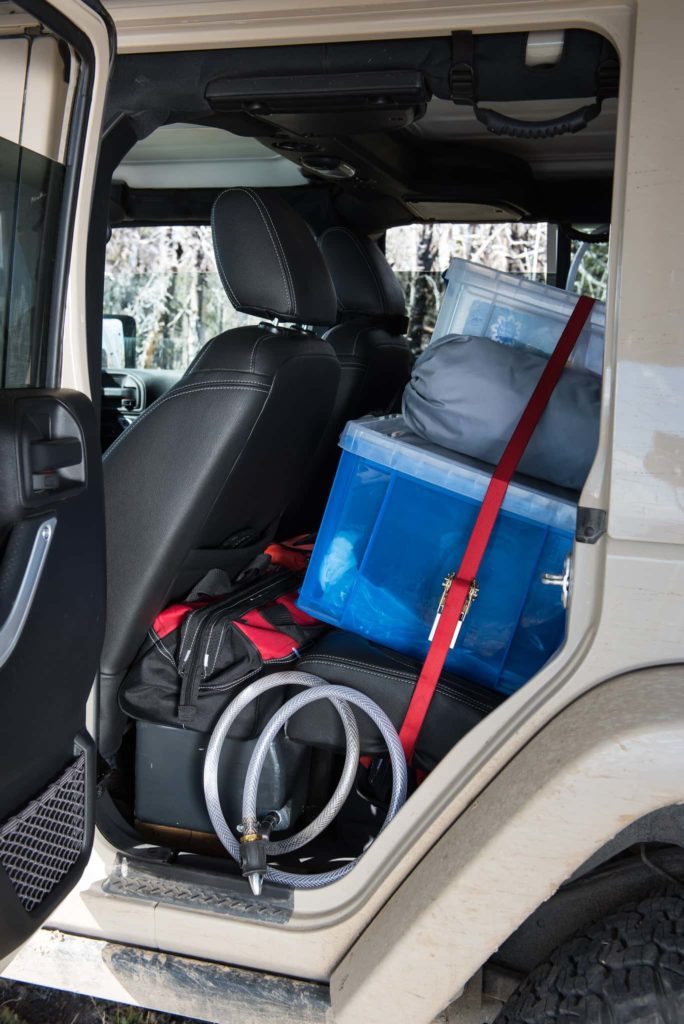Written by Chris Wood / Photos by Chris Wood, Scott Brady & Dean Osborne
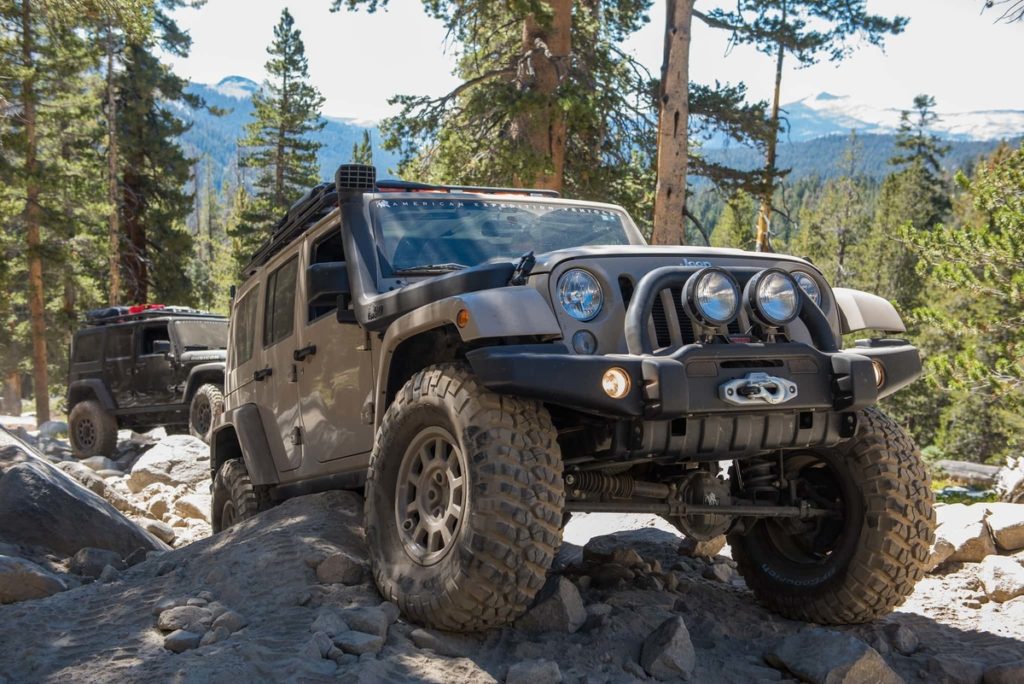
From the moment the first photos of this Jeep appeared on social media, AEV knew it had something special on its hands. It was a 470-HP V8 Wrangler, equipped with all of AEV’s accessories and wrapped in Jeep’s beautiful Desert Sand paint. The look was clean but rugged, with color-matched wheels giving the vehicle a subtle military vibe. Upon seeing photos of the vehicle, one Facebook follower went so far as to post “Sweet Jesus that’s one sexy Jeep” — and so continued the overwhelmingly positive public reaction.
Given the public’s enthusiasm for the Jeep, no one could have blamed AEV if it had whisked it off to a life on the tradeshow circuit, where thousands of people could enjoy seeing it firsthand. But AEV had other plans for this Jeep, which surprisingly enough called for sending it off for use as a field-testing mule. There, this “sexy Jeep” would be subjected to thousands of miles of harsh conditions so that AEV could once again examine the performance and durability of its Wrangler accessories and the Wrangler platform.
For those who are well familiar with AEV, you know that testing is an important part of the company’s product development. Much of this testing takes place in labs and proving grounds and even though these tests can be extremely severe, AEV knows there is still no substitute for real-world field-testing. For this particular Jeep, the field-testing would involve tackling three grueling 4WD routes of vastly different character. What follows is a glimpse into each route, the unique challenges they imposed on the Jeep and a record of how both AEV’s accessories and the Jeep Wrangler faired.
Dempster Highway (Arctic Circle)
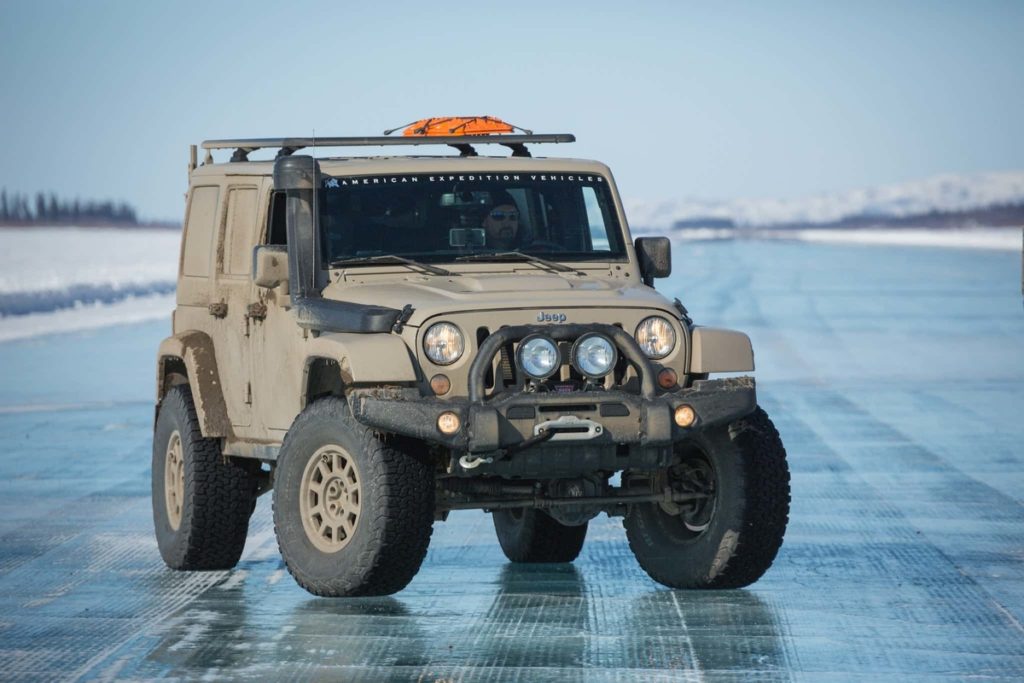
The first leg of AEV’s field-testing took place on the remote Dempster Highway. This 417-mile ribbon of dirt was constructed between 1958 and 1979 and traverses the Canadian sub-arctic wilderness of the Yukon and Northwest Territories. It is one of only two Canadian roadways to actually cross into the Arctic Circle and it serves as the only land-based supply line between the towns of Whitehorse and Inuvik. AEV chose to cross the Dempster Highway in the winter in order to benefit from the brutal, sub-zero conditions that grip the roadway.
During the winter the Dempster Highway is diabolical as it punishes a vehicle with a nearly constant blast of mud, snow and gravel. For this particular crossing, conditions were so bad at times that many portions of the Jeep’s undercarriage and body could literally not be identified through a casing of frozen muck. In fact for three days, a 6-inch layer of this stuff effectively welded the rear doors of the Jeep to the fender flares, rendering the doors inoperable. Despite this, the Jeep seamlessly soldiered on and successfully completed not only the Dempster Highway, but 300-miles of the Mackenzie River Ice Road and over 5000 highway miles going roundtrip between Seattle, Washington and Whitehorse, Canada.
Test result: Upon returning home we were extremely pleased to note that there had been zero mechanical failures on the Jeep and not a single item was loose or out of adjustment. Further, the Jeep and all of its accessories continued to function perfectly without so much as a squeak or vibration. Considering that some mornings in the Arctic had been so cold that we actually cringed before starting the engine, it was amazing to find the vehicle and its accessories operating as if the trip had never even taken place.
Oregon Back Country Discovery Route
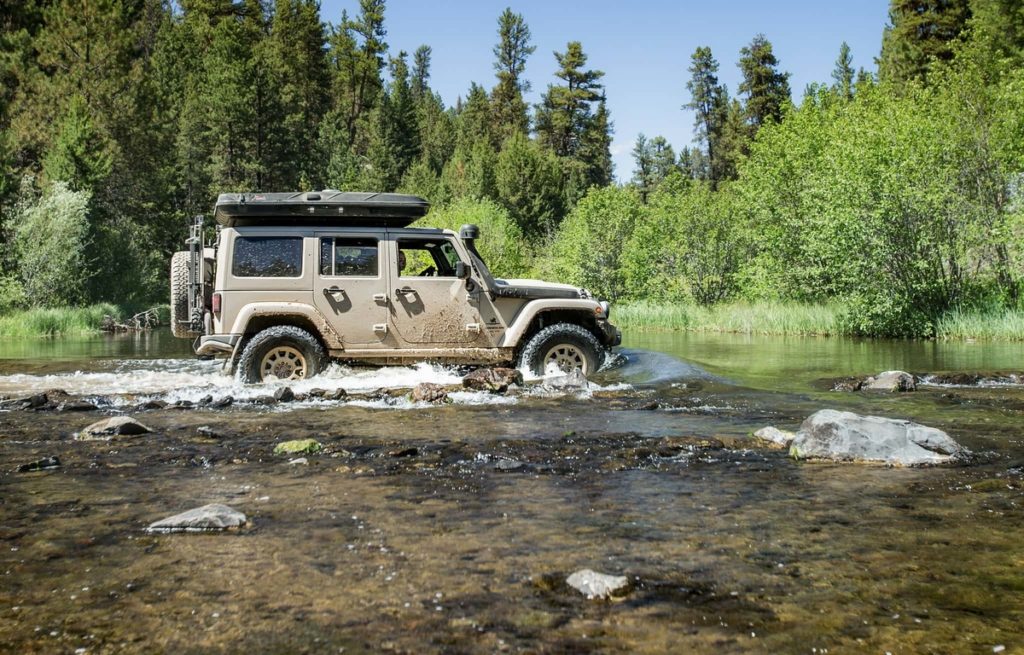
The second leg of AEV’s field-testing took place on the historic Oregon Back Country Discovery Route (OBDR). This 1000-mile path is comprised of a patchwork of decaying wagon tracks, Jeep trails, logging roads and snippets of paved highway. It traverses Oregon from the border of California to the border of Washington and along the way serves up a remarkable variation in terrain, ranging from volcanic high desert to evergreen-shrouded mountain ranges. AEV chose to cross the OBDR just one month after completing the Dempster Highway and quickly found that the conditions that made the OBDR harsh, couldn’t have been more different from those in the Arctic.
Where the Dempster Highway had tested the Jeep with mud, snow and severe cold, the OBDR did it with high heat, silt and a merciless roadbed of potholes and rock. Even with an average speed of only 15 mph, the trails and tracks shock-loaded and vibrated the Jeep’s every component like a jackhammer on Red Bull. In an effort to further stress the Jeep, it had been loaded to 1000lbs over GVWR and for nine days it labored under this excess weight. Despite the abuse, the Jeep went on to not only complete the OBDR, but another 1000 highway miles going roundtrip between Seattle, Washington and Lakeview, Oregon.
Test result: Upon returning home we were once again extremely pleased to note that there had been zero mechanical failures, but we did note that three bolts on an AEV control-arm bracket had loosened on the trail and needed to be re-torqued. Beyond that, the Jeep and all of its accessories once again continued to function perfectly without so much as a squeak or vibration. Given how ridiculous the trail impacts had been, particularly over the lava fields in Southern Oregon, it struck us as remarkable that loose bolts, squeaks and rattles weren’t found all over the vehicle.
Dusy Ershim Trail
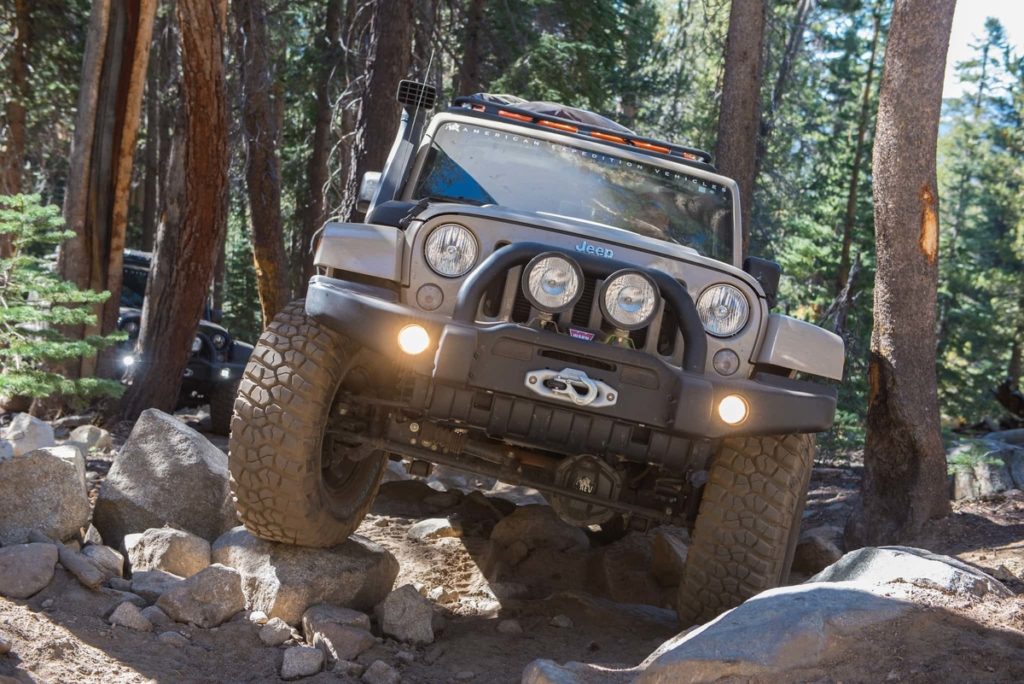
The third and final leg of AEV’s field-testing took place on the infamous Dusy Ershim Trail. This 33-mile Jeep track was constructed between 1956 and 1968 and snakes its way between the Courtright Reservoir and Kaiser Pass, in California’s Sierra Nevada Mountains. This trail can best be described as a virtual non-stop gauntlet of boulders, fenced in by a literal wilderness of towering pines. At twice the length of the Rubicon Trail, the Dusy Ershim Trail is widely considered the more punishing of the two. AEV chose to cross the Dusy Ershim Trail just one month after completing the OBDR and just as the conditions on the OBDR and the Dempster Highway had been dramatically different from each other, so too were the conditions on the Dusy Ershim Trail, different yet again.
Where the Dempster Highway and OBDR had combined to freeze, heat, vibrate and smother the AEV Jeep, the Dusy Ershim Trail was all about a slow, brutal slog over California’s finest granite boulders. Over its entirety, this trail served up a relentless barrage of obstacles to torment the vehicle’s drivetrain, steering, bumpers, skid plates, wheels and of course, its suspension — which had to cope with a pounding from the rocks below, the constant torque-load of the engine and of course the endless demands for maximum articulation. Despite this punishment, the Jeep went on to not only complete the Dusy Ershim Trail, but another 2000 highway miles going roundtrip between Seattle, Washington and Shaver Lake, California.
Test Result: Upon returning home we noted our first mechanical failure, which had been a seized CV-Joint on the front driveshaft. Since this kind of failure is a known problem on lifted JK Wranglers, we had been prepared and simply replaced the driveshaft on the trail. Beyond that, the Jeep and its accessories were closely examined for any signs of fatigue, malfunction, misadjustment and looseness. Amazingly, other than lots of undercarriage scuffs and gouges, no problems could be found. In fact, once again the Jeep and it accessories continued to function perfectly without so much as a squeak or vibration. Considering all the broken vehicles, broken parts and even broken glass we passed while on the Dusy Ershim Trail, we could not have been happier with our results.
Conclusions
Each year AEV undertakes extensive field-testing to re-examine the performance and durability of its products, and the Jeep Wrangler platform. Ultimately this testing helps to ensure that each product will perform properly in a wide range of environments, and it helps identify areas where the Wrangler might be improved with new products. For this beautiful Desert Sand-colored AEV Jeep, it had come through this grueling 9700-mile test needing only a driveshaft replacement and a bolt tightening, and overall it demonstrated not only how dependable the AEV-equipped Wrangler is, but how versatile. And these are key points for all of us to consider who need a single 4WD vehicle that can reliably do everything from comfortable highway cruising, to heavily-loaded overlanding, to boulder-crawling — and maybe even the tradeshow circuit! Few vehicles can truly do all these things well, but the AEV-equipped Wrangler genuinely can.
— CW —
